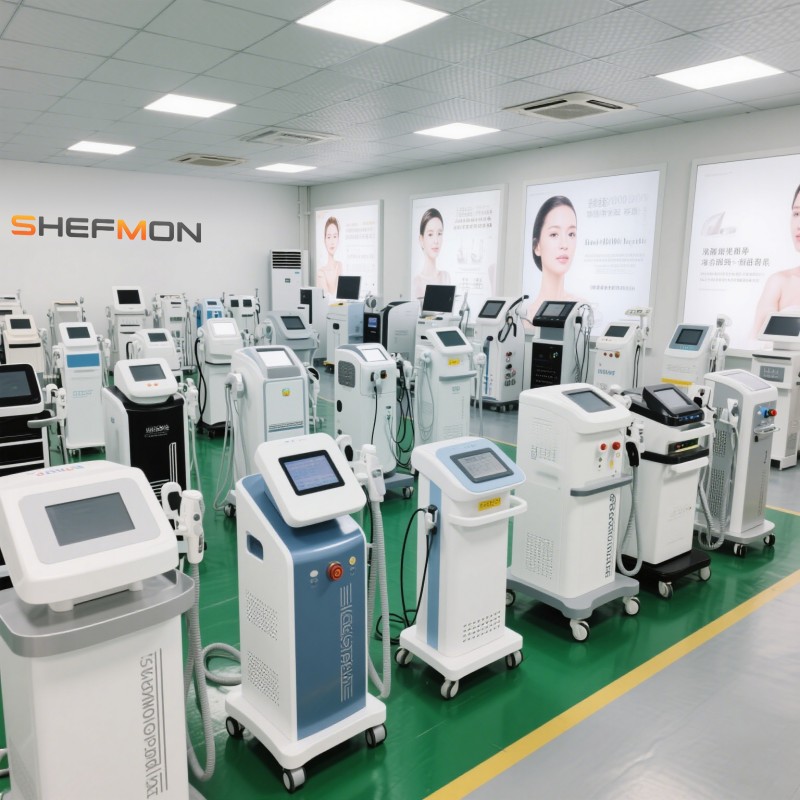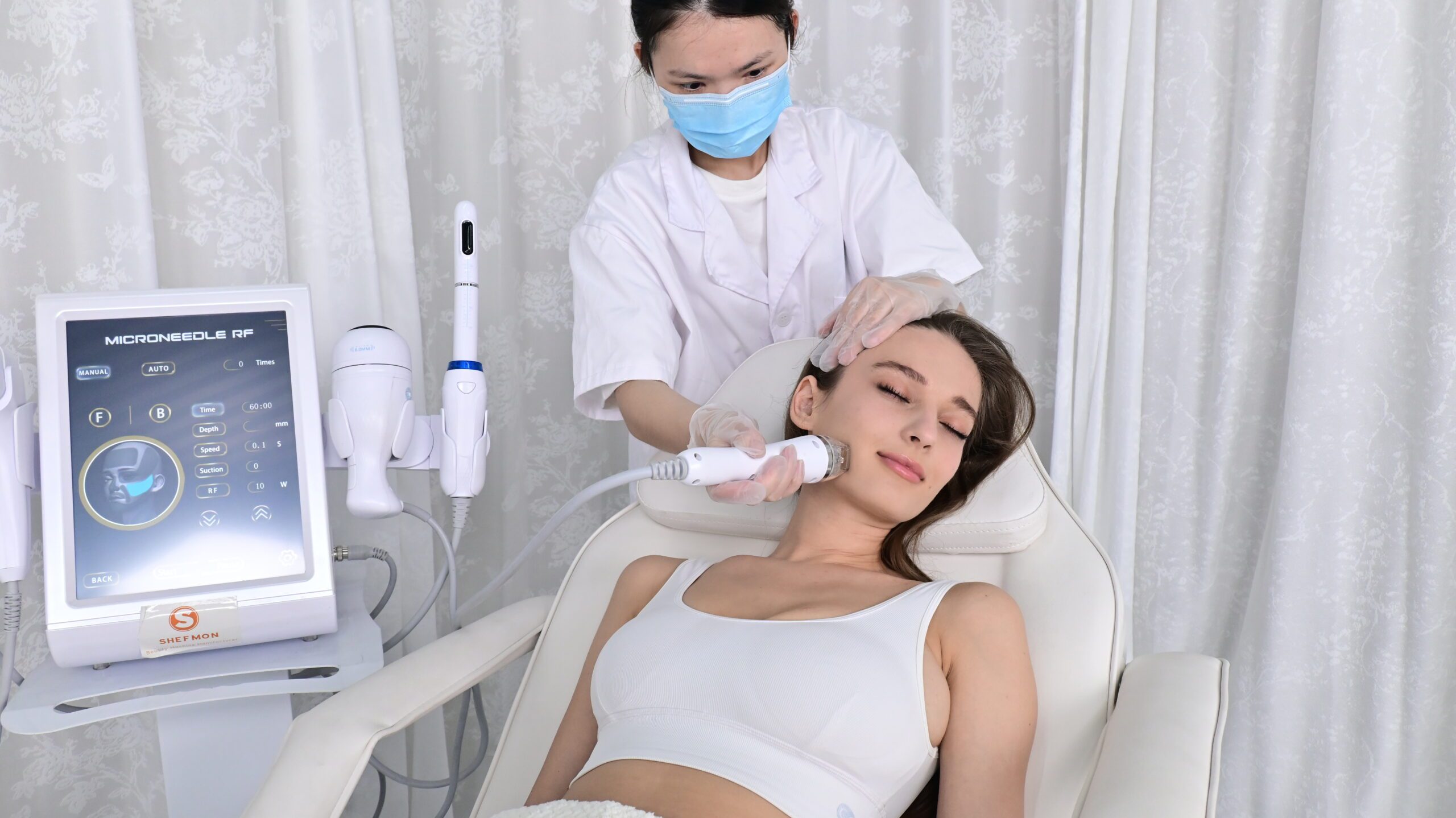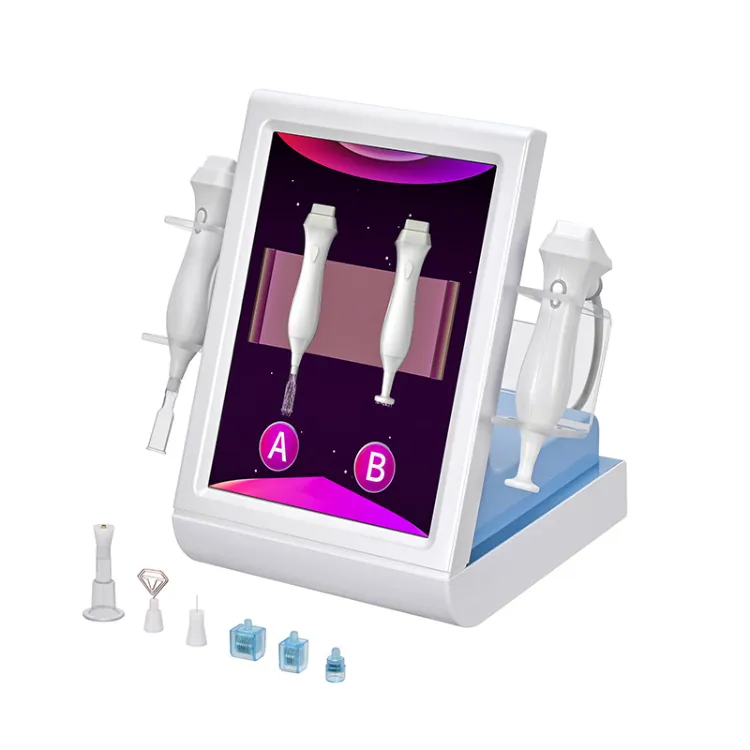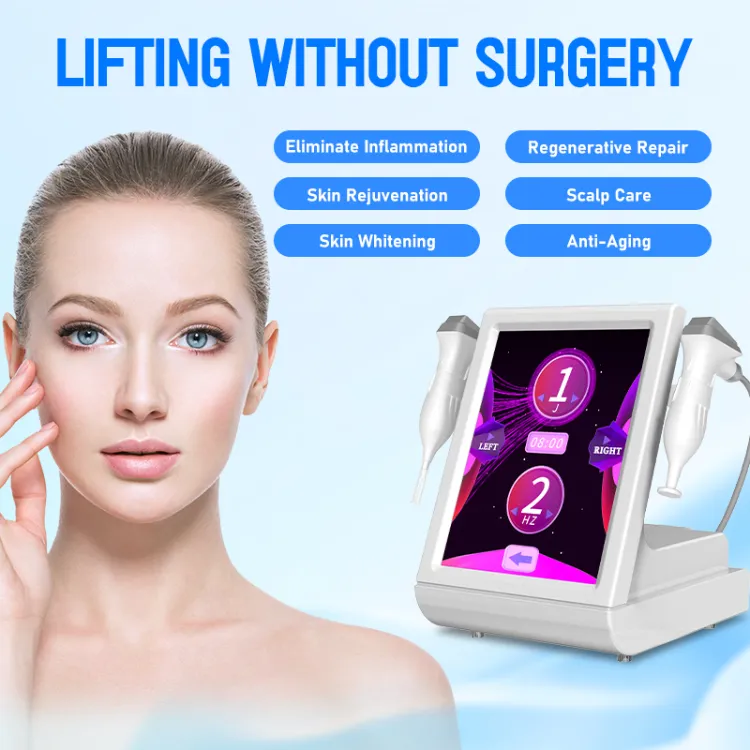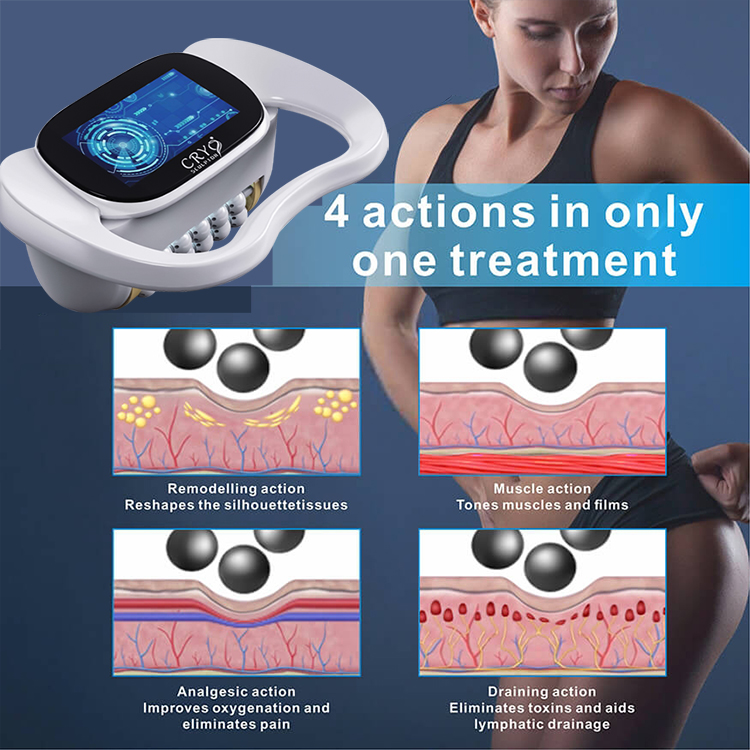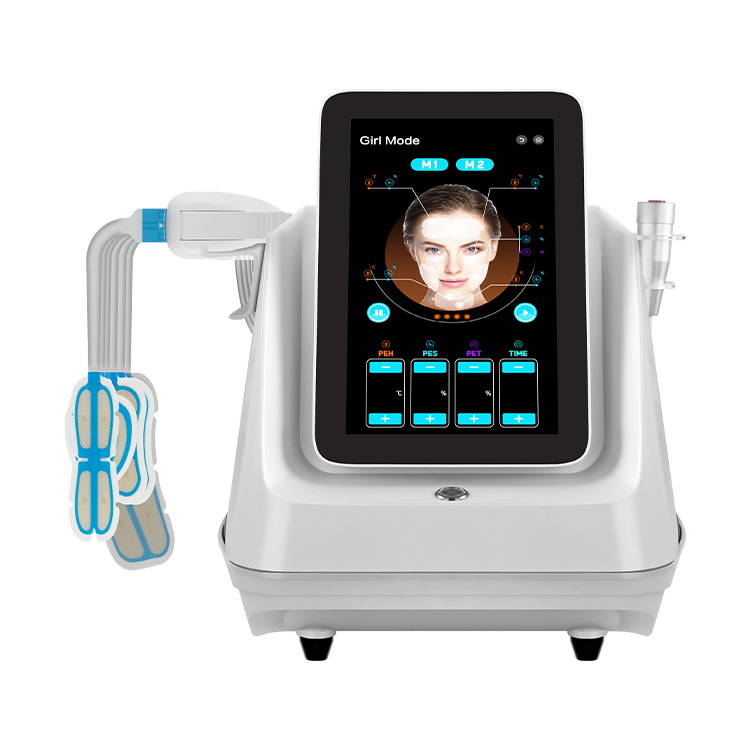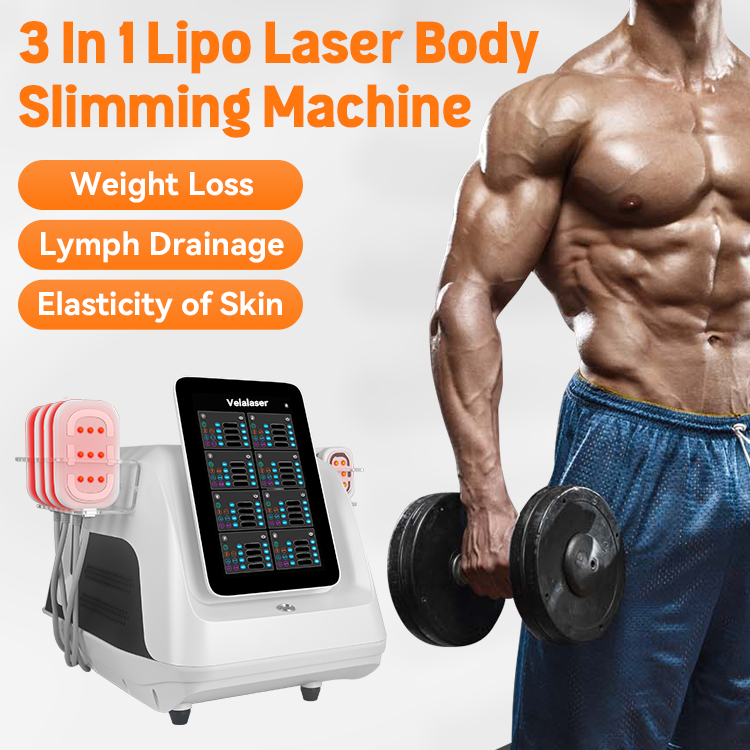Share optimized solutions, professional valve knowledge and industry news
Please enter the relevant terms or keywords you need to consult, and relevant articles will appear in the search results. If you can’t find the answer you need, please feel free to contact us and we will be happy to help. Or you can directly send an email to beauty@shefmon.com
Acne Scars Treatment Equipment: Safe, Scientific & Professional Tools with SHEFMON
Table of Contents
Acne Scars Treatment Equipment: Safe, Scientific & Professional Tools with SHEFMON
Acne scars can deeply affect skin texture, tone, and confidence. Whether you have shallow marks, rolling scars, boxcar, or ice-pick types, using the right equipment is key to improving appearance. At SHEFMON, we offer advanced devices based on proven principles—lasers, RF, microneedling, fractional ablation—that deliver results safely and effectively.
🔬 Scientific Principles Underlying Acne Scar Treatments
Fractional Ablative vs Non-Ablative Resurfacing
Ablative fractional lasers remove outer skin layers in micro-zones, stimulating new tissue growth and collagen remodeling. Very effective for deep scars but require more downtime.
Non-ablative lasers heat the deeper dermis without removing outer layers, leading to less downtime and fewer risks (especially for darker skin types).
Radiofrequency (RF) Microneedling
Tiny insulated needles penetrate the skin, delivering RF energy into deeper layers. This causes controlled micro-injury, stimulating collagen & elastin to remodel scar tissue. Safer for the epidermis and lower risk of pigment changes.Collagen Remodeling and Neocollagenesis
Regardless of device, the aim is to trigger fibroblasts in dermis to produce new collagen and elastin. Over time, this helps rise depressed scars, smooth rolling texture, reduce depth of boxcar or ice pick scars.Multiple Treatment Modalities & Combining Therapies
Many clinical protocols combine lasers, RF, microneedling, chemical peels, and sometimes filler or subcision to address both structure (depth of scar) and surface texture.
🛠 Types of Equipment & How They’re Used
Here are the main equipment / technologies clinicians use:
| Technology | Best For | Pros | Cons |
|---|---|---|---|
| Fractional CO₂ Laser | Deep, pitted or rolling scars, when resurfacing texture is needed | Strong remodeling, dramatic results | More downtime, risk of pigmentation if not done properly |
| Er:YAG Ablative Laser | Similar to CO₂ but gentler in certain cases, thinner ablation | Less downtime than CO₂ in some protocols | May require more sessions depending on depth |
| Non-Ablative Lasers (1550nm, 1927nm, etc.) | Mild-moderate scars, improved texture, minimal downtime | Safer for darker skin, less risk | Slower improvement, less dramatic than ablative |
| RF Microneedling | Rolling, boxcar, depressed scars; good texture improvement with moderate risk | Controlled injury, less downtime, adjustable depth | Skin sensitivity, cost per session, slight discomfort |
| Subcision / Fillers | Deep tethered scars (rolling), volume loss | Immediate lift, works well in combination | Needs skill, sometimes multiple sessions, costs accumulate |
✅ SHEFMON Equipment Options (Suggested) for Acne Scar Treatment
Here are SHEFMON machines you might match to the scar treatment categories above (if you have these products you should link them):
Microneedling + RF Devices – Great for integrating dermal remodeling while protecting outer skin—look for your MNRF Deepth machines.
Fractional CO₂ Resurfacing Lasers – For deep texture and severe acne scar revision (e.g., SHEFMON’s CO₂ fractional laser equipment).
Combination Machines – Combining RF + laser + microneedling in one system can allow multi-modal treatment options.
(If you send me the product links of your RF microneedling machines, fractional CO₂ devices, etc., I can embed them here.)
⚠️ Safety, Skin Types & Best Practices
Skin Type Matters: People with darker skin (Fitzpatrick IV-VI) are at higher risk of post-inflammatory hyperpigmentation. Non-ablative or gentler ablative protocols are safer.
Downtime vs. Results: Deeper treatments bring more visible results but more healing time. Plan treatment schedules carefully.
Proper Aftercare: Sun protection, moisturization, avoiding harsh skincare, following instructions to avoid infection or pigmentation.
Experienced Operators: Device settings, depth, energy, pulse duration, and cooling are critical to avoid damage.
🔍 Case Types & How to Choose Equipment
Ice-Pick Scars: Very deep & narrow. Often need subcision, sometimes punch excision + focused ablative laser.
Boxcar Scars: Broad depressions with sharp edges. Respond well to fractional lasers or RF Microneedling.
Rolling Scars: Wavy, tethered tissue. Needs subcision + resurfacing or RF microneedling for texture.
Equipment choice depends on scar type, skin type, tolerance for downtime, and budget.
❓ FAQ – Acne Scar Treatment Equipment
1. How many sessions are usually needed?
Usually 3-6 sessions spaced 3-6 weeks apart are common for moderate acne scar treatment; deeper or more severe may take more.
2. Which tech gives fastest visible improvement?
Fractional ablative lasers typically show faster, more dramatic improvements, but with more downtime. Non-ablative + RF microneedling is slower but safer and less disruptive.
3. Is microneedling alone enough?
For mild scars, yes. For deeper scars, combining microneedling with RF, fillers, or lasers gives better results.
4. What are common side effects?
Redness, swelling, peeling, risk of pigmentation changes (especially in darker skin), risk of infection if aftercare not followed well.
5. How long do effects last?
Once scars are remodeled and healed, results can last for years. Maintaining healthy skin habits and protection from UV helps preserve improvements.
